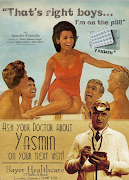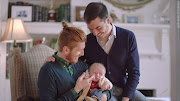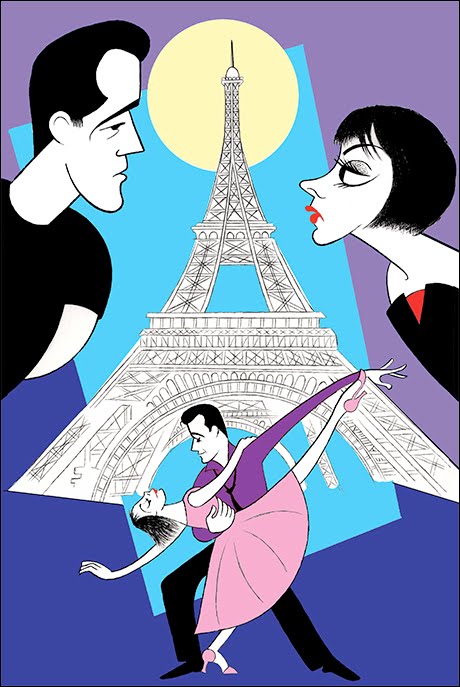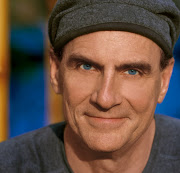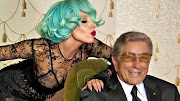 It’s the same old boy meets girl story. Okay, maybe it’s not. Wait. It’s more like middle-aged white Jewish guy doesn’t meet black billionaire media tycoon, but follows her career from afar. The guy would be me, and the tycoon would be our holy St. Oprah of Chicago.
It’s the same old boy meets girl story. Okay, maybe it’s not. Wait. It’s more like middle-aged white Jewish guy doesn’t meet black billionaire media tycoon, but follows her career from afar. The guy would be me, and the tycoon would be our holy St. Oprah of Chicago. Around 1983, I was on a plane reading PEOPLE magazine, when I came across a story about a Chicago talk show hostess (that’s what they called female talk show hosts in those days). There were photos of her – extremely overweight, too much makeup, too much hair, huge, strangely compelling smile. Could she be the next Phil Donahue, the writer wondered? Nah, I thought. Nobody can out-Phil Phil Donahue. At the time, I was a Donahue fanatic, always going on about how Phil had the best gig in the universe. I was so hooked on Phil that a few years earlier, when I worked at a St. Louis TV station, I used to lock my office door at 10AM so that I could watch his show, even though there was a hard and fast rule that employees were never to switch the channel from our own KPLR-TV, Channel 11 – “The Ones to Watch.” Get it? 11, the “ones” to watch. Oy.
But Phil(below, left) had invented a genre that caused the American public to switch its collective allegiance from soap operas to his talk show. One day he would have a
 world leader on his stage, and the next day he would have male strippers. Ku Klux Klan-ers, motion picture legends, crooked politicians, gay activists, punk rockers, atheists, life-changing scientists – if you can think of a category of human being, you saw it on Phil, sometime between 1974 and 1996, the years his syndicated program aired first from Chicago and later from New York.
world leader on his stage, and the next day he would have male strippers. Ku Klux Klan-ers, motion picture legends, crooked politicians, gay activists, punk rockers, atheists, life-changing scientists – if you can think of a category of human being, you saw it on Phil, sometime between 1974 and 1996, the years his syndicated program aired first from Chicago and later from New York. As it happened, Oprah could and indeed did become “the next Phil Donahue.” Oprah took Phil’s concept, beginning with her hosting gig on AM Chicago (right), and nursed it along until it evolved into something much broader than Donahue had ever envisioned. One could safely say Oprah invented the concept of media
 convergence. Today, convergence is a term that is tossed around to describe various media working in harmony to convey information to a mass audience. It can be as simple as Oprah starting a book club, or as technologically advanced as Oprah using Skype, contemporary software that allows ordinary viewers to communicate remotely (sometimes from their own kitchens) in real time with Oprah, in front of a live audience. Today, Oprah’s convergence methodology extends to her “Oprah Radio,” her diverse collection of programming on XM satellite radio. It even reaches out to movie audiences, most recently through her collaboration with movie maker Tyler Perry on the film Precious. “O,” the magazine is celebrating its 10th year in print, in conjunction with the Heart Corporation. Oprah is media convergence, defined.
convergence. Today, convergence is a term that is tossed around to describe various media working in harmony to convey information to a mass audience. It can be as simple as Oprah starting a book club, or as technologically advanced as Oprah using Skype, contemporary software that allows ordinary viewers to communicate remotely (sometimes from their own kitchens) in real time with Oprah, in front of a live audience. Today, Oprah’s convergence methodology extends to her “Oprah Radio,” her diverse collection of programming on XM satellite radio. It even reaches out to movie audiences, most recently through her collaboration with movie maker Tyler Perry on the film Precious. “O,” the magazine is celebrating its 10th year in print, in conjunction with the Heart Corporation. Oprah is media convergence, defined.The evolution of Oprah is something to behold, and a lesson in “anything is possible.” Oprah was born to a coal miner and house maid in a rural Mississippi town with a population even today that doesn’t reach 8,000. If legend is accurate, Oprah was the result of a single sexual encounter between her parents. For the four of you out there who haven’t heard the story, you can Google her and read all about it, but the highlights are extreme poverty, sexual molestation, the ability to read before age three, a pregnancy at age 14 that resulted in a still birth, and an inner drive that allowed her to achieve more than her early life story would have portended. As for the molestation part, Oprah revealed over the years that she was abused by a cousin, an uncle and a family acquaintance, beginning at age nine.
Her early story is all about over-achieving. By her senior year in high school she was already working in TV news. The obvious progression, as the years added up, was to put her on air as a newscaster,(left)
 but Oprah could not manage the requisite poker face. If a story was funny, she looked straight in the camera and laughed that hearty Oprah laugh we know so well now. If a story was sad, her empathy fairly spilled over the airwaves, sometimes even resulting in tears. It was clear Oprah was not to be Walter Cronkite. By 1984 she had a local Chicago morning talk show. By 1986 she was nationally syndicated. The rest we’ve been watching for 25 years.
but Oprah could not manage the requisite poker face. If a story was funny, she looked straight in the camera and laughed that hearty Oprah laugh we know so well now. If a story was sad, her empathy fairly spilled over the airwaves, sometimes even resulting in tears. It was clear Oprah was not to be Walter Cronkite. By 1984 she had a local Chicago morning talk show. By 1986 she was nationally syndicated. The rest we’ve been watching for 25 years.Well…almost 25 years. Recently, Oprah revealed that 25 would mark her sterling silver transition from the daytime talk arena into ownership of her own network, The Oprah Winfrey Network (OWN). It is likely Oprah will do for cable all that she did for all other media. Just as traditional network news traces its most important paradigm shift to the day John F. Kennedy was killed, cable TV will probably mark its true ascent to the moment Oprah chose cable over network syndication.
Why does it matter to you? Does it even matter? It does. It should. Oprah Winfrey is living proof that one human being can make a positive difference in the lives of millions of others. Whether it is a post-Katrina Louisiana housing development built with Oprah dollars, or a South African school for girls built with Oprah’s sheer will and determination, it matters. Everything Oprah has done in these 25 years has been geared toward enabling individuals to become their “best selves,” as she terms it. She has given a voice to individuals who otherwise may have remained involuntarily silent. She has offered a platform for individuals who could substantively contribute to the mix of ideas – individuals who had previously been unable to find the widest audience. Consider Mattie Stepanek, the self-titled “poet and peacemaker,” who suffered from a rare form of muscular dystrophy that finally claimed his life. Mattie’s words had already reached many people by the time Oprah met him, but she enabled him to reach tens of millions more. Watch: After this quarter century of everything Oprah, it is not really about whether you find her appealing or whether you even watch her show. It is about recognizing excellence; separating the glitz and glamour from the real and the important. Oprah’s steady emergence was the visual representation of the intersection of the civil rights movement and television’s grasp on popular culture. When she finally got to interview her lifelong heroes (Barbara Walters, Mary Tyler Moore, Sidney Poitier)
 we all got to experience the same full circle moments. Since Oprah could beat the odds she overcame, maybe we can too. If Oprah can come outside of herself and dedicate her best energy to enriching the lives of those who need it the most, maybe that can be a catalyst for us to do so, as well. Oprah has high standards in an era when standards have all but disappeared. There is a critical message in there somewhere for us all.
we all got to experience the same full circle moments. Since Oprah could beat the odds she overcame, maybe we can too. If Oprah can come outside of herself and dedicate her best energy to enriching the lives of those who need it the most, maybe that can be a catalyst for us to do so, as well. Oprah has high standards in an era when standards have all but disappeared. There is a critical message in there somewhere for us all.Oprah has given us a 23-month notice that she’s closing down The Oprah Winfrey Show. That’s plenty of time for us to recognize what she brought to the cultural table, and to understand how she found a way to use media to enrich all of our lives.
And selfishly, here’s my favorite part of Oprah’s impending departure – her last broadcast is scheduled for September 9, 2011 – my birthday!






